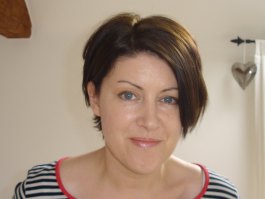WritersServices Self-publishing Guide 7
Help for writers
 Print On Demand - or POD - is exactly that: a service whereby your book is printed only when it has been ordered, either by a bookshop or an online retailer. POD is an alternative to offset printing, where it is usually only economical to print large quantities of books.
Print On Demand - or POD - is exactly that: a service whereby your book is printed only when it has been ordered, either by a bookshop or an online retailer. POD is an alternative to offset printing, where it is usually only economical to print large quantities of books.
If a publisher, or author, is certain they can sell thousands of copies in a short space of time, a book will be printed in bulk and shipped out to distributors ready to be sold in bookshops or via online stores. But if there is not this immediate demand - as is often the case with self-published titles - POD is used instead.
How It Works
The process of POD is incredible simple. Your book files are uploaded to the printer's system - one file for the cover (front, back and spine in one pdf document) and one for the interior. When an order is placed, the printer produces a single copy - or the exact quantity required - and ships the books to the customer. The customer could be the author herself, Amazon, a library or bookshop, or a wholesaler such as Gardners. The author/publisher is then credited with their cut of the cover price of the printed book.
For example, a book has its retail price set at £7.99, and is printed by POD company Lightning Source. Amazon, Gardners - or your local bookshop - need to buy the book in at a cheaper price so they can make their profit when selling on to the end customer (the reader). This is called a ‘discount' and is usually no less than 40%. After this is deducted, Lightning Source take their fee for printing the book, and for materials (ink, paper etc) and you, the author/publisher, get the rest, often called ‘publisher compensation'. For a typical 260 page paperback, this will be around £1.50 per copy.
Popular POD Services
Many printers now offer POD, but there are a couple who stand out because of the links they have with large wholesalers and distributors. In the UK, Lightning Source are the go-to POD service, offering good customer service and competitive unit prices. The downside of Lightning Source is you need to set up a publisher account and act as the publisher - providing your own ISBNs, for example, and generally knowing what you are doing up front. CreateSpace, which belongs to Amazon, is popular world-wide, and has a more ‘hand-holding' approach to the process. Authors can use one of CreateSpace's free ISBNs if they do not wish to buy their own.
Pros and Cons
As an author who has used both POD and offset printing, I would say the main downside of POD is the paper - it's impossible to use lightweight bookwove paper with the POD process, so the books themselves can feel heavy and more dense than a traditional paperback. However, if you don't want to store hundreds - or even thousands - of books, and handle the distribution yourself, then POD is definitely the way to go.
WritersServices Self-publishing offers a well-established assisted self-publishing service, as well as its highly-regarded copy editing and proof-reading services.
WritersServices Self-publishing Guide 1: What is self-publishing?
An explanation of self-publishing as it stands today, introducing the term ‘indie' and a brief overview of routes to market for indie authors.
WritersServices Self-publishing Guide 2
Choose Your Self-publishing Route
WritersServices Self-publishing Guide 3
EbooksDigital bookstore selling wide range of ebooks in 50 categories from Hildegard of Bingen to How to Write a Dirty Story and showing how the range of ebooks available is growing.: Formatting for Kindle
WritersServices Self-publishing Guide 4
How to format for Kindle
WritersServices Self-publishing Guide 5
Ebooks: Distributing to Other Eretailers
WritersServices Self-publishing Guide 6
Cover Design Know-how: Tips from a top designer on how to make your indie cover look professional and stand out from the crowd
WritersServices Self-publishing Guide 8
Ebooks: Pricing Strategies for Indie Authors
WritersServices Self-publishing Guide 9
Marketing and Promotion for Indie Authors: Online
WritersServices Self-publishing Guide 10
Marketing and Promotion for Indie Authors:Offline
Joanne Phillips lives in Shropshire, England with her husband and young daughter. She divides her time between writing novels and freelance indexing. She's the author of commercial women's fiction Can't Live Without and The Family Trap, and the Flora Lively Investigates series of cosy mysteries. Can't Live Without was an Amazon top 100 bestseller in 2012 and her books regularly appear on category bestseller lists. Joanne blogs about writing and publishing at www.joannephillips.co.uk
Connect on:
Facebook: http://www.facebook.com/joannephillipsauthor
Twitter: @joannegphillips
Amazon: http://www.amazon.co.uk/Joanne-Phillips/e/B0083UEG86/
Chris Howard works as a freelance graphic designer producing a wide range of designs from logos, business cards, brochures, music artwork, large format designs for companies such as the Open University, and book covers for the e-book and paperback market. www.facebook.com/blondesigngraphics
Other articles by Joanne Phillips on the WritersServices site:
The Business of Writing
The Ins and Outs of Indexing
How to Market Your Book Online
